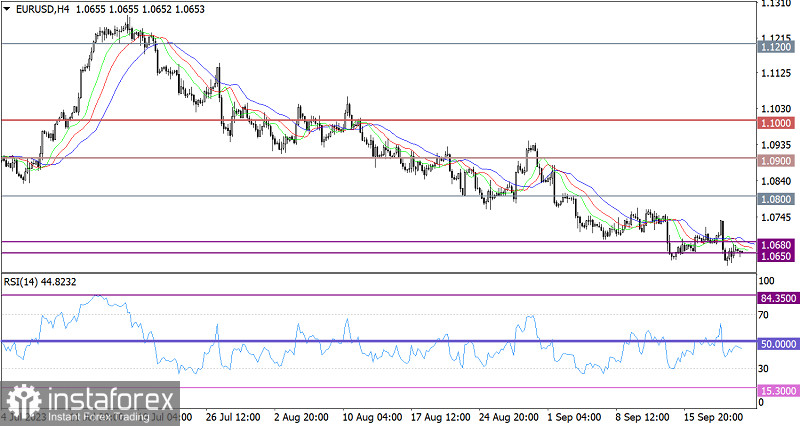The Bank of England has voted to keep rates on hold and also hinted that no further tightening of monetary policy is planned. The euro, which was expected to follow the pound's decline, remained virtually unchanged. It unexpectedly received support from Philip Lane, who stated that the European Central Bank would maintain high interest rates for as long as necessary, implying that we should not wait for the monetary easing to start soon.
Another restraining factor remains the excessive overbought condition of the dollar. And this factor seems to be even more significant. Nonetheless, the euro still needs a good reason to correct higher. Unfortunately, there aren't many of those today. Preliminary estimates of business activity indexes, both in Europe and the United States, are expected to be similar. According to forecasts, only manufacturing gauges are expected to show growth, while the services sector, and consequently, composite business activity indexes, are expected to fall. Therefore, the single currency will likely remain unchanged. However, there's still a possibility that volatility may gradually increase and the pair could show some movement.

The EUR/USD pair has returned to the previously traded range of 1.0650/1.0680. This does not disrupt the downward cycle.
On the four-hour chart, the RSI indicator is moving in the lower area of 30/50, indicating that the bearish sentiment remains in force.
On the same chart, the Alligator's MAs are headed downwards, corresponding to the main cycle's direction.
Outlook
To extend the bearish scenario, the price should remain firm below 1.0600. In this case, it could move towards the next key level at 1.0500. However, there is still a strong signal of the euro's oversold conditions despite the corrective move. Therefore, there is a possibility of a subsequent retracement if the price remains above 1.0680.
In terms of the complex indicator analysis, we see that in the short-term period, technical indicators are pointing to a corrective phase. Meanwhile, in the intraday and mid-term periods, the indicators are reflecting a downward cycle.
 English
English 
 Русский
Русский Bahasa Indonesia
Bahasa Indonesia Bahasa Malay
Bahasa Malay ไทย
ไทย Español
Español Deutsch
Deutsch Български
Български Français
Français Tiếng Việt
Tiếng Việt 中文
中文 বাংলা
বাংলা हिन्दी
हिन्दी Čeština
Čeština Українська
Українська Română
Română

